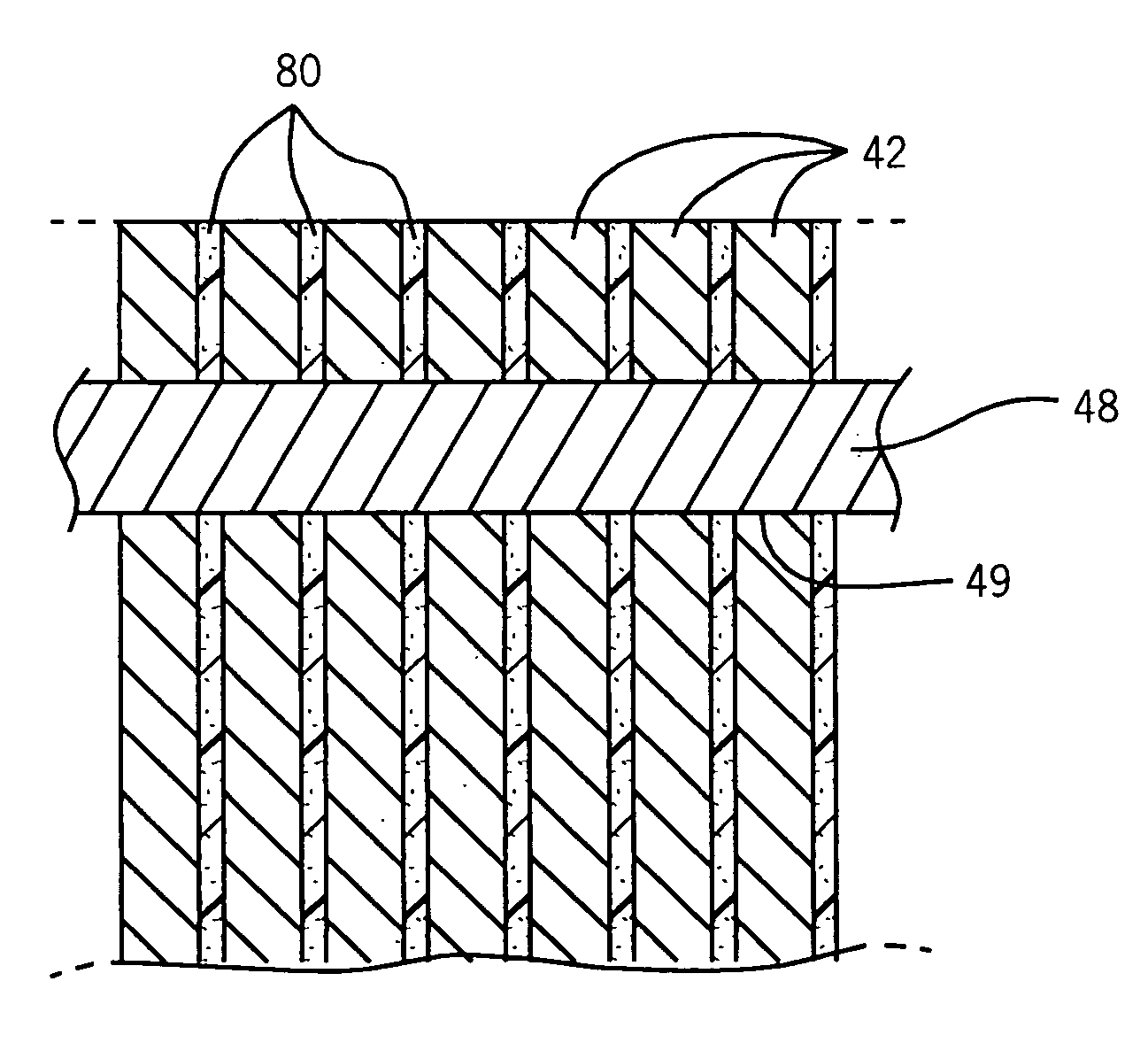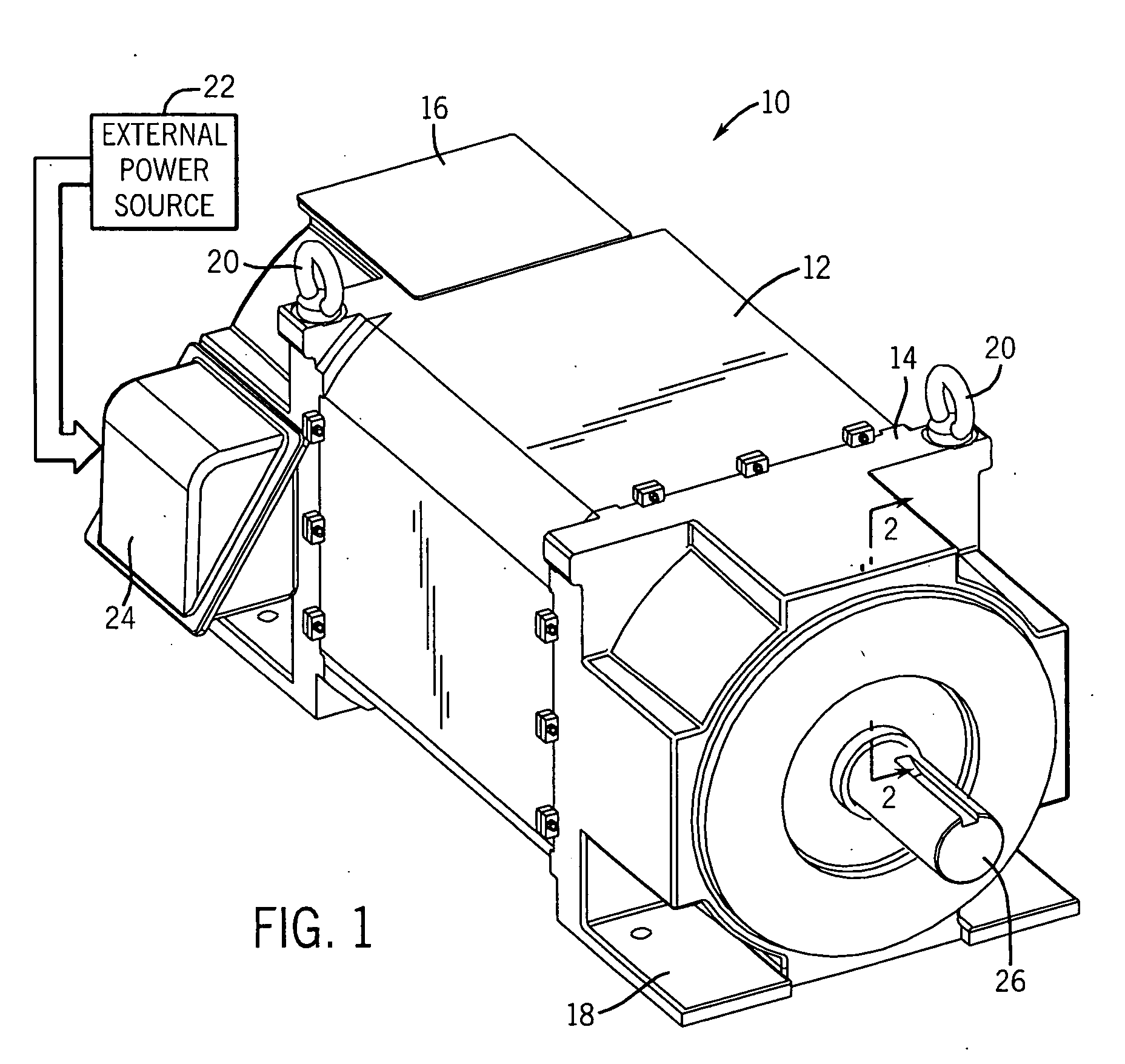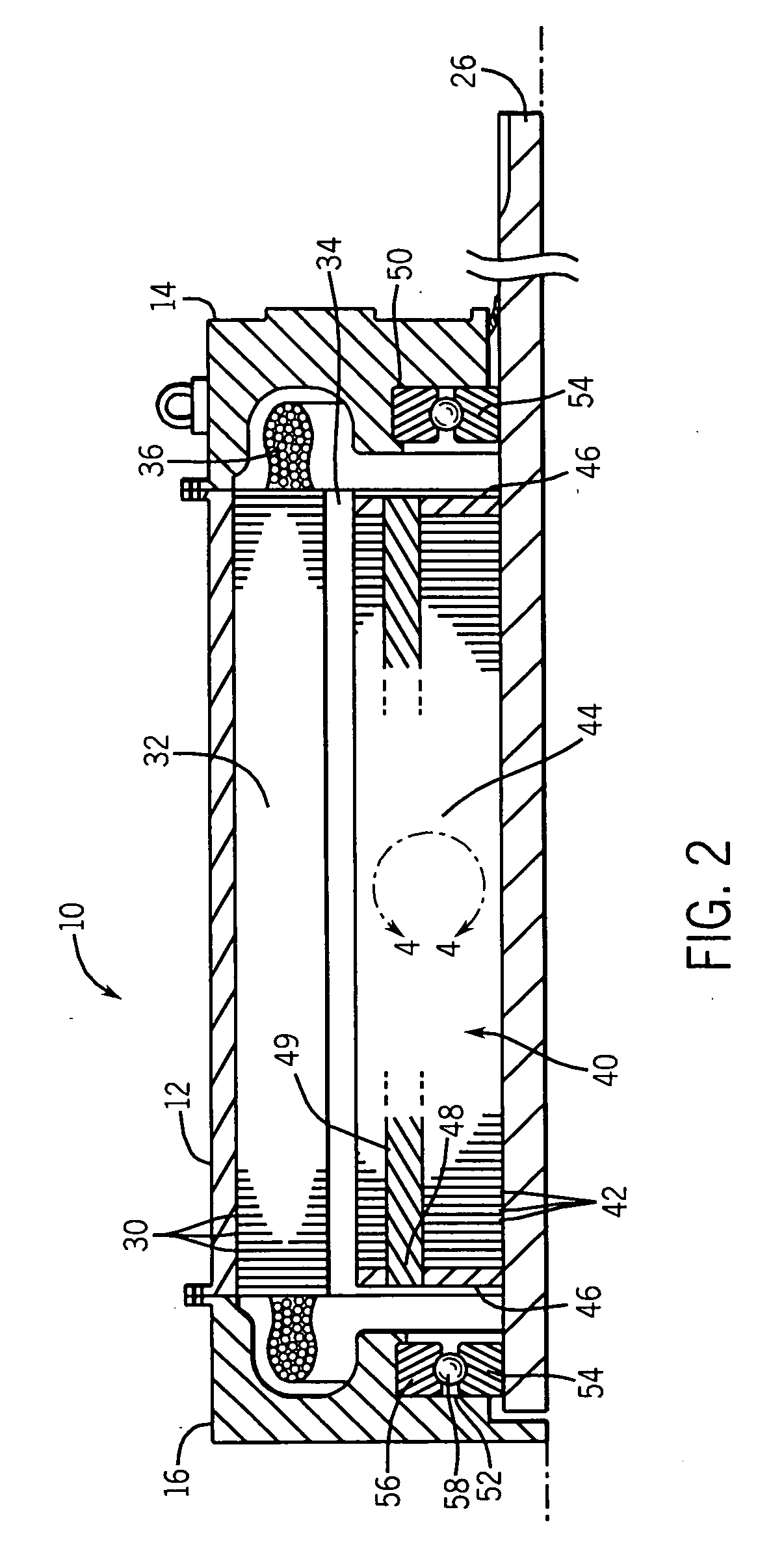Bonded rotor laminations
a rotor and rotor technology, applied in the direction of synchronous motors, dynamo-electric machines, magnetic circuit shapes/forms/construction, etc., can solve the problems of motor malfunction, difficult operation of motors at the speed corresponding to the first natural frequency, and lessen the performance of motors, etc., to facilitate the operation of rotors, increase the stiffness of rotor cores, and increase the stiffness of rotor assemblies
- Summary
- Abstract
- Description
- Claims
- Application Information
AI Technical Summary
Benefits of technology
Problems solved by technology
Method used
Image
Examples
Embodiment Construction
[0018] As discussed in detail below, embodiments of the present technique provide apparatus and methods for rotors and rotor construction. Although the following discussion focuses on induction motors, the present technique also affords benefits to a number of applications in which the rotor integrity is a concern. Indeed, the present technique is applicable to any number of induction motor and generators as well as non-induction based motors and generators. Accordingly, the following discussion provides exemplary embodiments of the present technique and, as such, should not be viewed as limiting the appended claims to the embodiments described.
[0019] Additionally, as a preliminary matter, the definition of the term “or” for the purposes of the following discussion and the appended claims is intended to be an inclusive “or.” That is, the term “or” is not intended to differentiate between two mutually exclusive alternatives. Rather, the term “or” when employed as a conjunction betwe...
PUM
 Login to View More
Login to View More Abstract
Description
Claims
Application Information
 Login to View More
Login to View More - R&D
- Intellectual Property
- Life Sciences
- Materials
- Tech Scout
- Unparalleled Data Quality
- Higher Quality Content
- 60% Fewer Hallucinations
Browse by: Latest US Patents, China's latest patents, Technical Efficacy Thesaurus, Application Domain, Technology Topic, Popular Technical Reports.
© 2025 PatSnap. All rights reserved.Legal|Privacy policy|Modern Slavery Act Transparency Statement|Sitemap|About US| Contact US: help@patsnap.com



